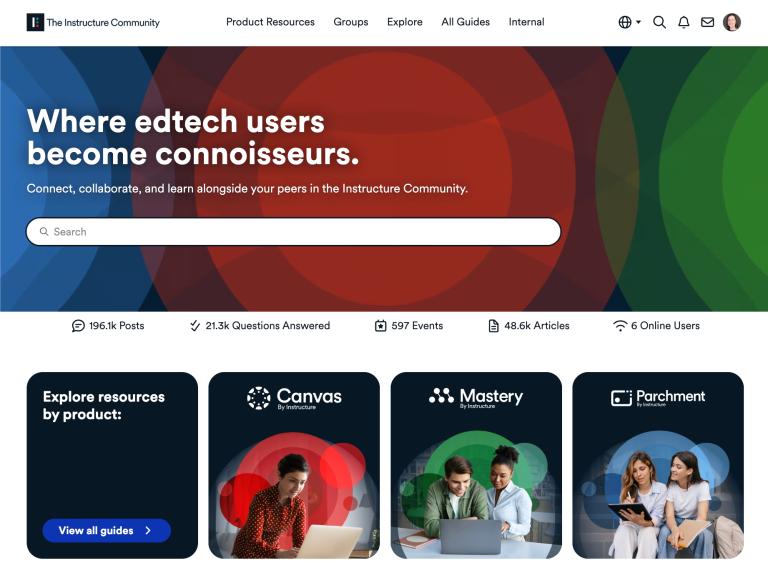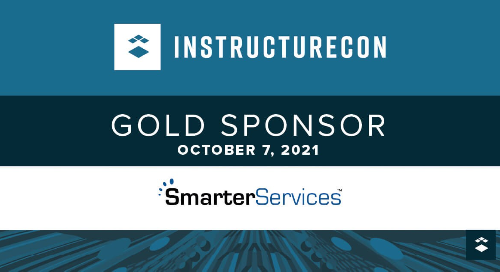Creating a positive experience and offering educational value to students is more important than ever. At the height of the COVID-19 pandemic in June of 2020, there were over 1.3 billion students worldwide affected by school closures. This quickly caused online learning to take the place of in-person education, leaving many students to miss out on their original in-person educational student experience.
Fast-forwarding to today, many schools are now conducting a hybrid learning environment. However, there still seems to be a lack in offering an exceptional student experience.
A June 2021 Student Academic Experience Survey published by the Higher Education Policy Institute and Advance HE out of the United Kingdom (UK) found that out of the 10,000 full-time UK undergraduate students surveyed, only 27% of them felt that they received “good or very good” value from the institutions they attended. This percentage was a significant decline from 2020 and 2019 retrospectively. In 2020, 39% of students felt their time at their institution represented “good or very good” value, compared to 2019 where 41% of the students felt they received “good or very good” value.
No matter how institutions plan to proceed with educating their students, one thing is for sure: Fostering an exceptional student experience that offers value is important to students.
3 Tips to Foster an Exceptional Educational Student Experience
1. Hear Your Students
Informa Connect states that “Providing a good [student] experience is all about listening to your students’ needs and letting them have a say in how the university is run.” This especially comes into play when considering a proctoring solution for your learners.
Proctoring is not a one-size-fits-all solution. Often, faculty members desire to select a proctoring modality that produces a deterrent level appropriate to the nature of the exam. Just as faculty members have choices, students also appreciate it when they are given proctoring modality
choices as well. Providing students with choices allows them to act as a well-informed consumer and make a proctoring choice that is best for them along the continuum of price to convenience.
Does your institution provide multiple proctoring modalities for your students? With a solution like SmarterProctoring, your institution could offer multiple proctoring modalities to your learners such as:
- Live Online Proctoring: A human proctor observes the testing session in real-time.
- Automated Proctoring: Automated anomaly detection identifies testing irregularities.
- Hybrid Virtual Proctoring: Institutions crafting their own online proctoring model by
- utilizing their human resources (testing center staff, faculty, and/or eLearning staff) to serve as the virtual proctors assisted by our artificial intelligence for anomaly detection as an improvement over trying to proctor with Zoom or some other video conferencing tool.
- Local Collegiate Testing Center Proctoring: Provided at a test center where the student is enrolled.
- Remote Collegiate Testing Center Proctoring: Provided at a test center at another institution near the student.
- Proctoring Professionals: Network of individuals that other schools may have approved (ie. human resource directions, pastors, school principals, etc.).
- Instructor as a Proctor: Instructors may proctor exams for local students at dates/times determined by the instructor.
Everyone learns and tests differently. Be sure to listen to your students. Education, especially when it comes to proctoring, should accommodate all learners.
For more information, check out these case studies on how to listen to your students and accommodate all learners through your proctoring modalities:
Florida State College at Jacksonville: Proctoring Through a Pandemic – Providing Accommodation for All.
Old Dominion University: Optimizing Efficiency, Creating Security, and Accommodating All Learners.
2. Know Your Students
The second way you can cultivate an exceptional student experience is by knowing your students. But this goes beyond just knowing their name. Knowing your students includes understanding that learners want to be provided with integrity, accessibility, privacy, and a credible educational experience.
Since moving courses online or to a hybrid model, many institutions have defaulted to the standard way of “knowing their students” through facial recognition as an online course authentication. Students are often asked to hold up their government-issued ID to a webcam
and consent to be monitored by a webcam. However, students are often concerned that their personal space is being invaded by a stranger viewing them and their room via a webcam. Neurodiverse learners also point out that testing via webcam does not allow them to properly focus during the exam. Technology concerns range from lack of the needed bandwidth to fears that the software is malicious and gaining access to their device after the session. Persons of color sometimes experience false positives being reported due to the lessened accuracy of facial recognition for their skin tone.
But due to federal regulations with financial aid, institutions must be actively verifying students’ identities. However, knowing your students doesn’t have to be frustrating for anyone involved.
One way institutions can know their students while still offering credibility, privacy, and security is through authenticating students by typing biometrics. Knowing your students this way reduces a student's aggravation through the following ways:
- It calms privacy concerns: Students are no longer having to hold up a government-issued ID or turn on their webcam.
- It increases accessibility: There's no longer a factor for performance anxiety due to a webcam always being on.
- It solves technology problems: You no longer have to have a broadband internet connection or a webcam. The only thing students need to have is a keyboard.
- It eliminates bias: No longer is webcam lighting an issue when authenticating persons of color. Students with religious headwear are also not affected. A person's physical appearance does not impact the authentication.
If you’re looking for a way to boost your student experience while still maintaining credibility and security, we suggest using SmarterID, a user authentication system. SmarterID uses keystroke biometric and/or facial recognition technology to validate a student’s identity and document attendance. Accommodation, privacy, and credibility are obtained as schools can choose the most suitable security level.
For more information about boosting student experience through authentication, take a look at these resources:
On-Demand Webinar: Authenticating Students without Aggravation.
The Importance of Authentic Assessment During Online Courses.
3. Understand Your Students
Your students’ success is important. And understanding how to help them succeed will make all the difference in providing them with a high-quality student experience.
However, whether you’re teaching students online, or educating them in an in-person classroom, it can be challenging to really learn who they are. Because throughout the school year, there are many factors that make up the success of a student.
Luckily, at SmarterServices, we’ve found that this challenge can be combated by measuring 8 factors on each student through the SmarterMeasure Learning Readiness Assessment. We recommend measuring your students on the following:
- Life Factors: Including understanding availability of time to study, availability of a dedicated place to study, reasons for continuing their education, support resources from family and friends, and their perceptions of their academic skills.
- Individual Attributes: Including understanding their level of procrastination, time management, persistence, willingness to ask for help, academic attributes, and locus of control.
- Learning Styles: Determining whether they are visual, verbal, social, solitary, physical, aural, or logical learners.
- Technical Competency: Determining their basic computer and internet skills like formatting an email, saving a file, etc.
- Technical Knowledge: Understanding their familiarity with technology usage, their current understanding of certain technology vocabulary, and their availability to a personal computer/high-speed internet.
- On-Screen Reading Rate and Recall: Understanding their ability to read on-screen at a steady speed while comprehending things like factual information, inferential information, and the main idea of the passage.
- Typing Speed and Accuracy: Understanding their skill level when it comes to writing essays, short answers, or papers when typing.
- LMS Competency: Understanding their current knowledge/usage of an LMS software.
Measuring these attributes will better assist your institution in understanding your students and allow you to provide them with the information and resources they need to succeed after accessing their current skill levels. Doing this helps to increase the overall student experience when each student is offered a tailored success plan that is specific to their attributes and skills.
Check out these resources to see how these institutions measured their students to foster further success in their learning and an excellent student experience:
Vanderbilt University Medical Center – Center for Programs in Allied Health: Overcoming Obstacles – Setting Learners Up for Success.
University of North Georgia: Providing Targeted Support for First-Time Online Undergraduate Students.
On-Demand Webinar: How to Foster Educational Success through Tailored Intervention Plans.
Top resources for boosting your institution’s student experience
Now that you’ve learned the three ways to start cultivating a tailored student experience, it’s time to put those practices into action. Check out these free resources to share with your colleagues and your students to get started:
9 Ways to Become a Successful Online Learner: Are your students prepared to be successful online learners this semester? This resource provides 9 tips and tricks you can share with your students to explain to them how they become successful online learners.
How to Stay Focused and Study Effectively for Your Online Courses: When studying for an online course, distractions can easily come up and it can be difficult to stay focused and study effectively. This resource offers 6 tips on how to resolve this issue.
How to Find and Create a Place to Study and Take Exams: Having an adequate place to study and take exams is essential to your students' success during online courses. Check out this resource that offers practical tips on how your students can find and create a place to study and take exams.
30+ Academic Continuity Resources: Having plans, tools, and training in place to avoid major disruptions is essential to continuing consistent, accessible, high-quality education for your students. This guide includes over 30 different academic continuity resources to help your institution and your students prepare for future success.
Boosting Virtual Student Engagement – Learn From Award-Winning Programs: In this blog, you’ll learn from three award-winning institutions on how they implemented virtual student engagement programs that positively benefited their students.
What Students Should Expect From Their First Online Proctored Exam: Read and share this blog with your students to help prepare them for their first online proctored exam. Learn what can and cannot happen during the proctored exam, as well as 7 tips to being prepared when their online exam starts.
It’s Time to Offer The Exceptional Experience That Students Want and Need.
Whether you’re teaching online, in-person, or adopting a hybrid model this year, having an exceptional student experience is a valuable part of a learner’s educational journey.
Make sure your institution is hearing your students, knowing your students, and understanding your students in order to create educational success and value.
If you have any questions or would like to learn more about any of these topics, we encourage you to reach out to us. We would gladly be able to help you identify at-risk students, automate online proctoring, and/or authenticate learners during online course work. For more information, click here.
Related Content
 inst-3step.jpg
inst-3step.jpgBlogs
 13lmsfeaturesthatbenefitstudentlearning.jpg
13lmsfeaturesthatbenefitstudentlearning.jpgBlogs
 community-homepage.jpg
community-homepage.jpgBlogs
